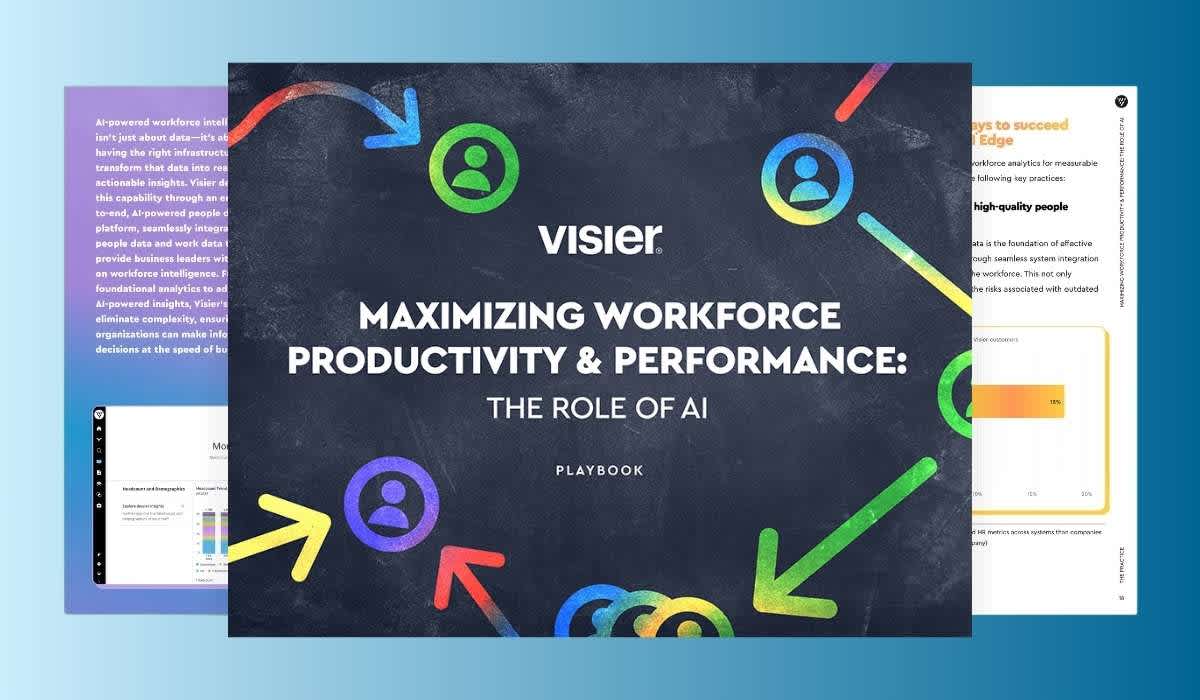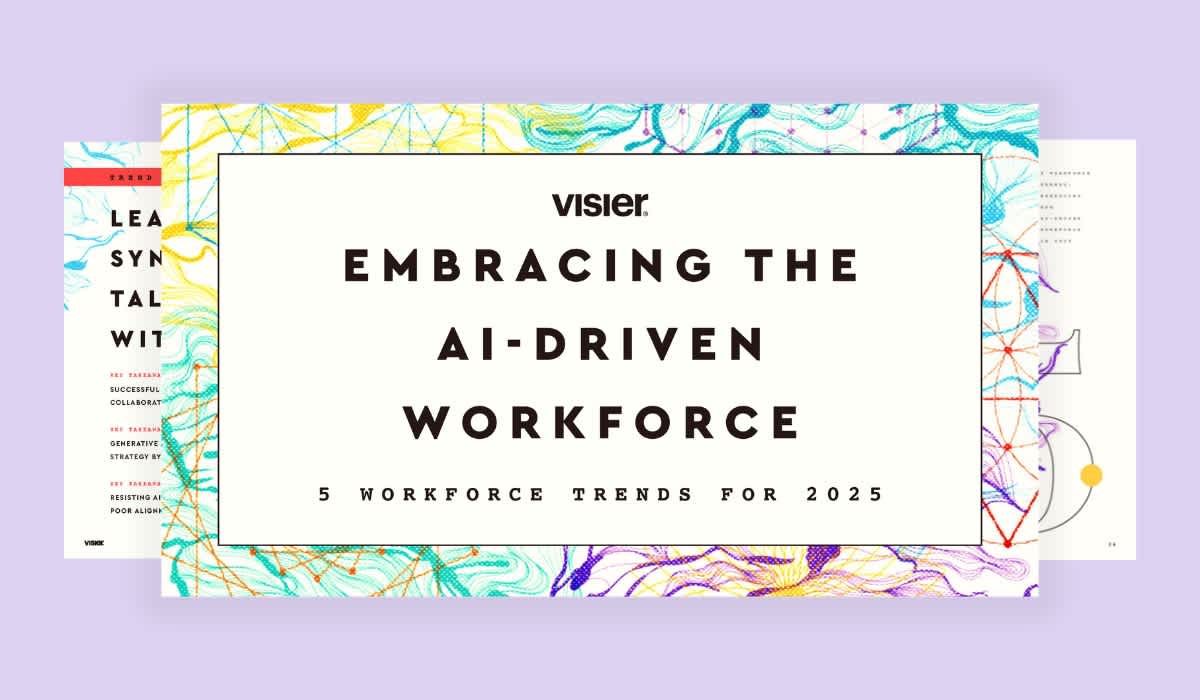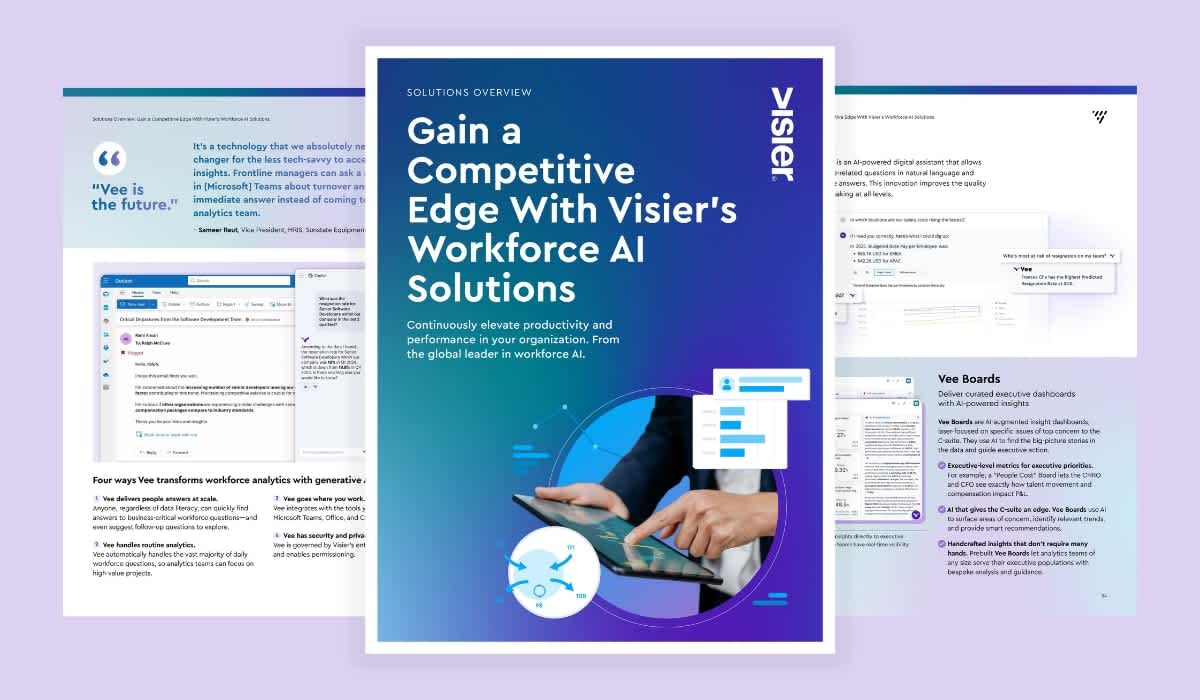Everything You Need To Know About Employee Productivity
Boosting employee productivity means creating the right environment for employees to thrive. Learn how to make employees more productive here.

Did you know that organizations with high-performing employees are three times more likely to exceed their financial targets?
The more productive employees are, the more goods and services companies can produce, which in turn, makes a positive contribution to the bottom line.
Here, we’ll examine how employee productivity contributes to overall workforce productivity and business productivity, and consider what employee productivity means in the evolving business landscape,.
Productivity improvements have traditionally come through cost-cutting, workforce restructuring, and operational efficiency. Today, though, technology and tools like generative AI (genAI) and other forms of artificial intelligence (AI) are helping companies significantly increase employee productivity.

What is employee productivity?
Employee productivity, also referred to as workforce productivity, is a measure of how effectively employees perform their work and contribute to the production of a company’s products, services, and service delivery over a certain timeframe, considering both the quantity and quality of the work.
A productive employee prioritizes tasks effectively, delivers work on time, and consistently meets or exceeds expectations. Productivity can be measured at the individual, team, and department levels. Each employee’s efforts contribute to the team, department, and ultimately, overall company productivity.
When properly measured and optimized, productivity becomes a powerful driver of business success. Today’s organizations benefit from ready access to technology tools that can provide a Workforce AI edge. By using AI-powered capabilities to help leaders understand the relationship between people and work, organizations can elevate employee productivity and win by adapting to change faster.
This connection between individual performance and organizational outcomes is precisely why leading companies are investing in sophisticated people analytics solutions.
Factors that influence employee productivity
There are a number of factors influencing employee productivity. Understanding these influences is important to ensure both efficient and effective output in an environment where employees are engaged. To improve employee productivity, make sure your organization is taking a multi-faceted approach to support employees.
Work environment
The environment in which employees work is important to ensure both their satisfaction and their ability to get their work done well. In fact, research indicates that when a workplace is well-designed, it can provide a productivity boost of up to 20%. Lighting alone can have an impact, with poor lighting shown to reduce productivity by 13%.
Other research has shown that plants can also provide a productivity boost, with one study from the University of Exeter indicating that green offices with plants could increase productivity by up to 17%.
Technology and tools
Employees need the right tools and technology to get their jobs done productively. The rapid advancement and introduction of genAI have recently made this abundantly clear. AI-powered tools can significantly boost workplace productivity by automating routine tasks.
Collaboration tools like project management applications can also help employees—and their teams—work more efficiently together by improving communication and helping to monitor deadlines, deliverables, and work outputs.
Management style and leadership
Direct managers and supervisors have a marked effect on employee engagement and productivity. For instance, Harvard Business Review reports that "people at high-trust companies report 74% less stress, 106% more energy at work, 50% higher productivity, 13% fewer sick days, 76% more engagement, 29% more satisfaction with their lives, and 40% less burnout than people at low-trust companies."
Effective leaders must also create clear expectations, provide constructive feedback, remove obstacles, and inspire their teams to perform at their best. It’s important for leaders to establish well-defined performance goals aligned with business objectives and to communicate expectations clearly to employees.
Employee engagement and motivation
Engaged employees consistently outperform their disengaged counterparts. Organizations with strong, positive cultures can see revenue growth of as much as four times when compared to companies with weaker cultures.
Motivation comes from meaningful work, recognition, development opportunities, and alignment with organizational purpose. Empowering employees with data-driven insights and autonomy to solve challenges proactively can be a key strategy for boosting engagement.
Training and development
Continuous learning opportunities are crucial for sustained productivity. Companies that offer comprehensive training programs have 218% higher income per employee than those that don't prioritize development, according to the Association for Talent Development (ATD).
Today’s employees value professional development opportunities, and companies benefit. In the rapidly evolving business environment, it's important for organizations to be continually focused on upskilling and reskilling employees to prevent productivity roadblocks that can be caused by skills gaps.
Work-life balance and well-being
Employee well-being directly impacts productivity levels. Organizations with wellness programs, for example, see "an average of 25% decrease in sick leave absenteeism," demonstrating the clear business case for supporting employee well-being.
A focus on talent development helps to align employee development and skills with company needs. Doing so helps to build talent density—the number of high-performing employees compared to the overall workforce—a key factor in boosting productivity and profitability.

How to increase employee productivity
Increasing your employees’ productivity may seem complicated, but it doesn’t have to be. Here are some strategies and steps to help you get started.
1. Set clear goals and expectations
When people know what they’re working towards, they’ll be more efficient and effective. Imagine all the time people would waste if they constantly had to second guess what’s expected of them.
Having clear goals makes it easier for people to focus on the tasks at hand. It also helps them know when they meet those expectations and when they should work a little harder. Here are some important steps you can take to help ensure employees understand and are prepared to achieve specific performance goals:
Use the SMART framework to ensure that goals are clear: Specific, Measurable, Achievable, Relevant, Time-bound.
Create a formal goal-setting process to align individual, team, and organizational objectives.
Document expectations and make them readily available to all.
Schedule regular check-ins to stay on top of progress.
Celebrate wins to help reinforce performance achievement.
Focusing on objective performance metrics like key performance indicators (KPIs), revenue per employees, and project completion rates can help managers and team members stay on top of progress and opportunities for improvement or course correction.
2. Stop micromanaging
Many feel micromanaging is the safest route to employee performance and productivity. You’re following their every step, making sure they do exactly what you want, how you want it, and when you want it. What you’re really achieving is decreasing satisfaction, engagement, and even harming productivity.
What to do instead? Go back to step one. Set goals, make your expectations clear, set a deadline, and trust your employees. Managers and supervisors have an important role to play here, and your leadership and HR teams can help to support them by:
Training managers to be effective coaches.
Implementing outcome-based management that is focused on results rather than methods.
Creating clear boundaries around decision-making and ensuring that employees understand which decisions they can make independently.
Establishing regular, structured check-ins to focus on progress.
Using AI-powered people analytics to identify areas of best practice and areas where there are opportunities for improvement.

3. Improve communication within the company
Create an environment where people feel safe speaking their minds. Allow them to share what they think of certain projects, the workflow, and more. Grammarly, in partnership with The Harris Poll, reports that effective communication is a growing challenge for most U.S. businesses and that poor communication can impact productivity, stress levels, and job satisfaction.
Take steps to improve communication by:
Using multiple communication channels to address different preferences and ensure that messages are received.
Implementing structured meeting protocols to ensure participation from all team members.
Establishing opportunities for anonymous feedback.
Training managers on active listening and focused communication skills.
Communication doesn’t need to always be face-to-face. Make sure employees can reach you with ease every time they have questions or issues to report. Meet their questions positively, helping them to the best of your abilities. Be a good listener and hear them when they have concerns or ideas.
4. Give constructive feedback
Whether or not you perform periodical evaluations, you will sometimes need to give feedback to your employees. Turn this into a learning opportunity for everyone, by:
Training all managers on the principles of effective feedback.
Creating a regular schedule of feedback that goes beyond the traditional annual performance review.
Implemented a continuous feedback platform to make giving and receiving feedback simple and routine.
Creating a feedback culture by modeling desired behaviors at the senior leadership level.
Negative feedback that only points out what they did wrong will help no one. Constructive feedback that focuses first on the employees’ strengths and then offers solutions for improvement can boost performance and productivity long term.
The reverse is also true. From time to time, ask for your employees’ feedback. It could be during the annual evaluation or you could do it at random moments, through surveys.
5. Create a flexible schedule
A fixed work schedule is not for everyone. Sure, some thrive in the predictability and routine of a classic 9-5. And some industries need a fixed schedule. But many don’t.
So, whenever possible, let your employees have a flexible schedule. If you’re worried it will create chaos, you can set a few easy guidelines.
For instance, make it clear how employees should communicate their schedule so that everyone knows when someone will be available. If two or more people need to be at work at the same time, assist them in finding the best schedule for all of them.
In addition, consider:
Defining core hours when all employees will be available for collaboration.
Implementing flexible start and end policies with clear boundaries.
Creating guidelines and a clear framework for hybrid work arrangements based on role requirements.
Developing clear productivity metrics focused on output rather than time spent.
Create tools for effective handoffs between team members working different schedules.
Workforce analytics tools can help track, measure, and analyze employee performance. For instance, Visier’s Workforce AI Edge can help model the impact of different flexible work policies before implementing them.
6. Prioritize your employee’s well-being
Focusing on productivity and effectiveness, you might forget your employees are only human. They need to balance their work with their private life and they need to take care of their health, both physical and mental.
Start by assessing your employees. Do they seem tired or stressed? Talk to them. What would help them relax and feel better, and be more energized? It could be a wellness program, a subscription to the gym, leisure activities after lunch, and much more.
Some additional steps to consider include:
Instituting a comprehensive wellness program designed to address physical, mental, and financial health.
Training managers to recognize and address signs of burnout.
Providing ergonomic workstations and equipment for all employees.
Offering flexible benefits to allow employees to design personalized benefits that best meet their work/life needs.
Establishing clear policies around after-hours communication.
Today’s AI-powered people analytics tools can help take the guesswork out of instituting policies and practices that measurably increase productivity.
The bottom line
Employee productivity importance can’t be overstated. It’s foundational to the achievement of business goals and objectives, cost-effectively, to support the bottom line and achieve efficiencies in producing and delivering products and services. When employees are at peak performance, the organization and its customers benefit. Understanding the drivers of productivity in your organization and putting in place practices to maximize them can help you engage employees in the achievement of your business goals and objectives.
There’s a clear tie between people analytics and productivity. Data-driven insights can help you understand what truly drives performance in your organization and what targeted strategies to implement to yield the best results.
Read more about employee productivity
Knowing how to measure employee productivity is critical to ensuring optimal performance results. Learn how here.
Executing a deliberate talent development strategy helps to align employee development and skills with company needs. Learn seven talent development strategies to boost productivity.
Talent density boosts productivity, innovation, and growth. Learn strategies for building, balancing, and measuring talent density in your workforce.



